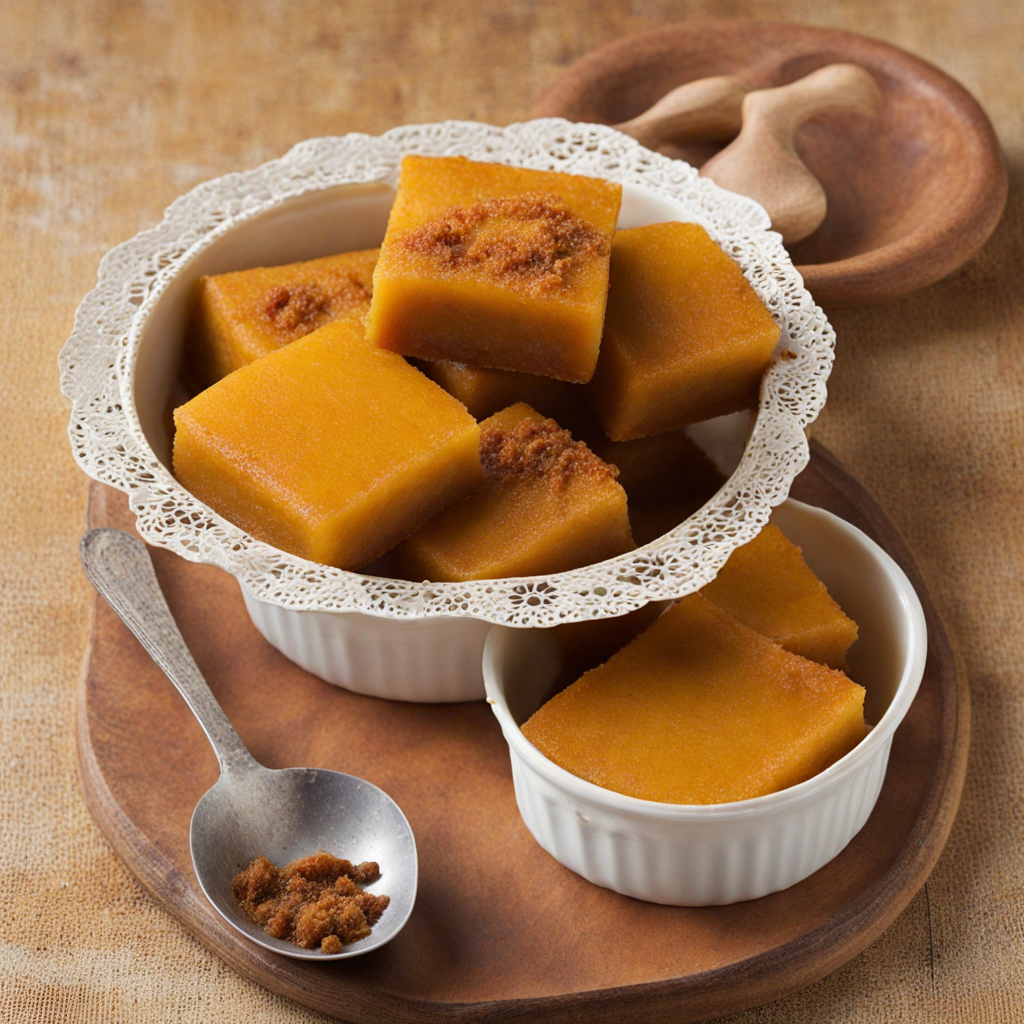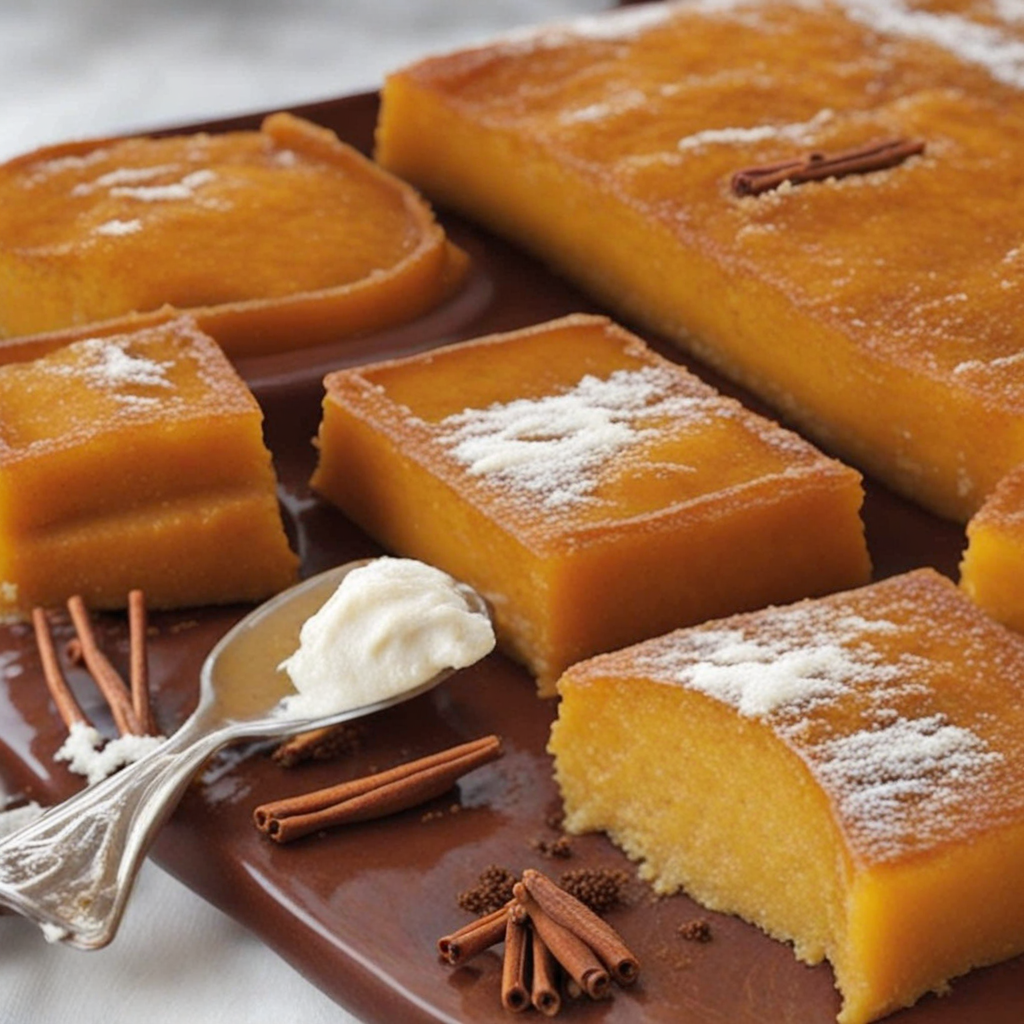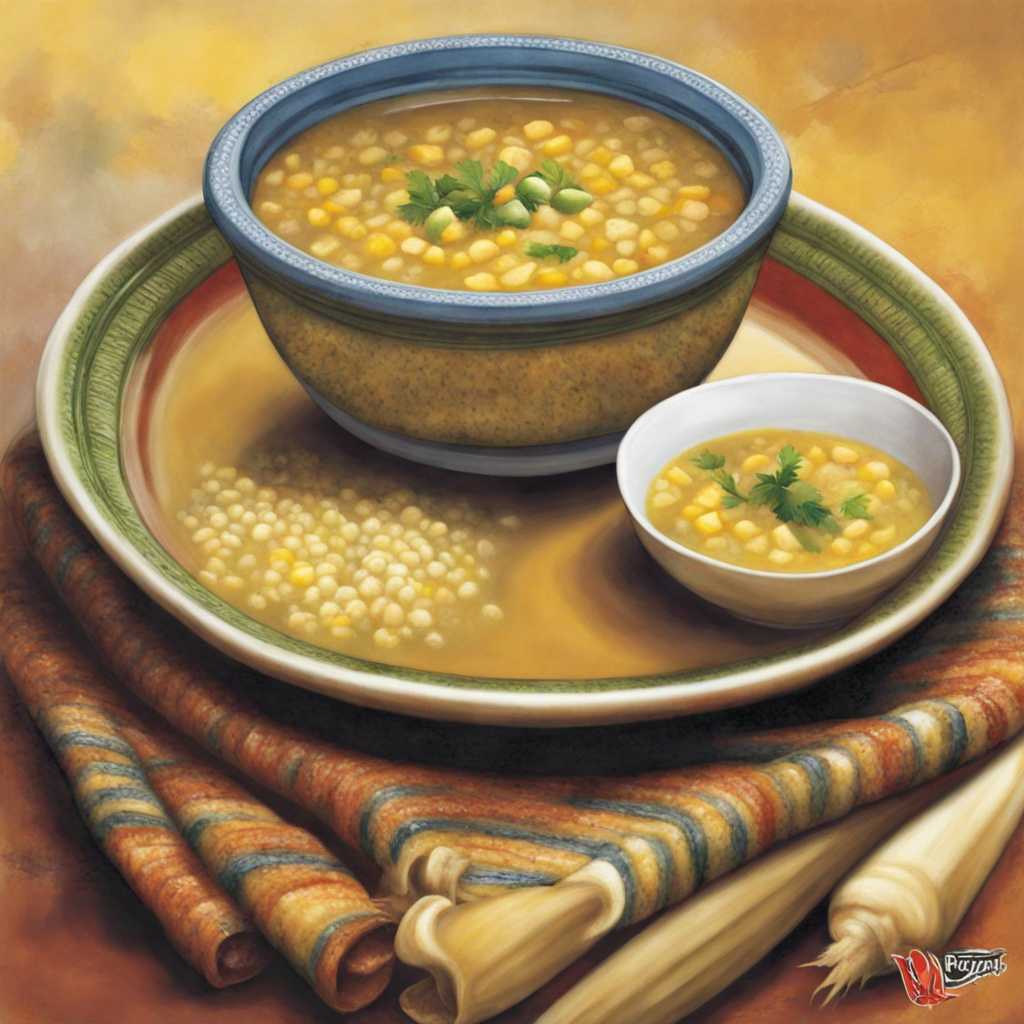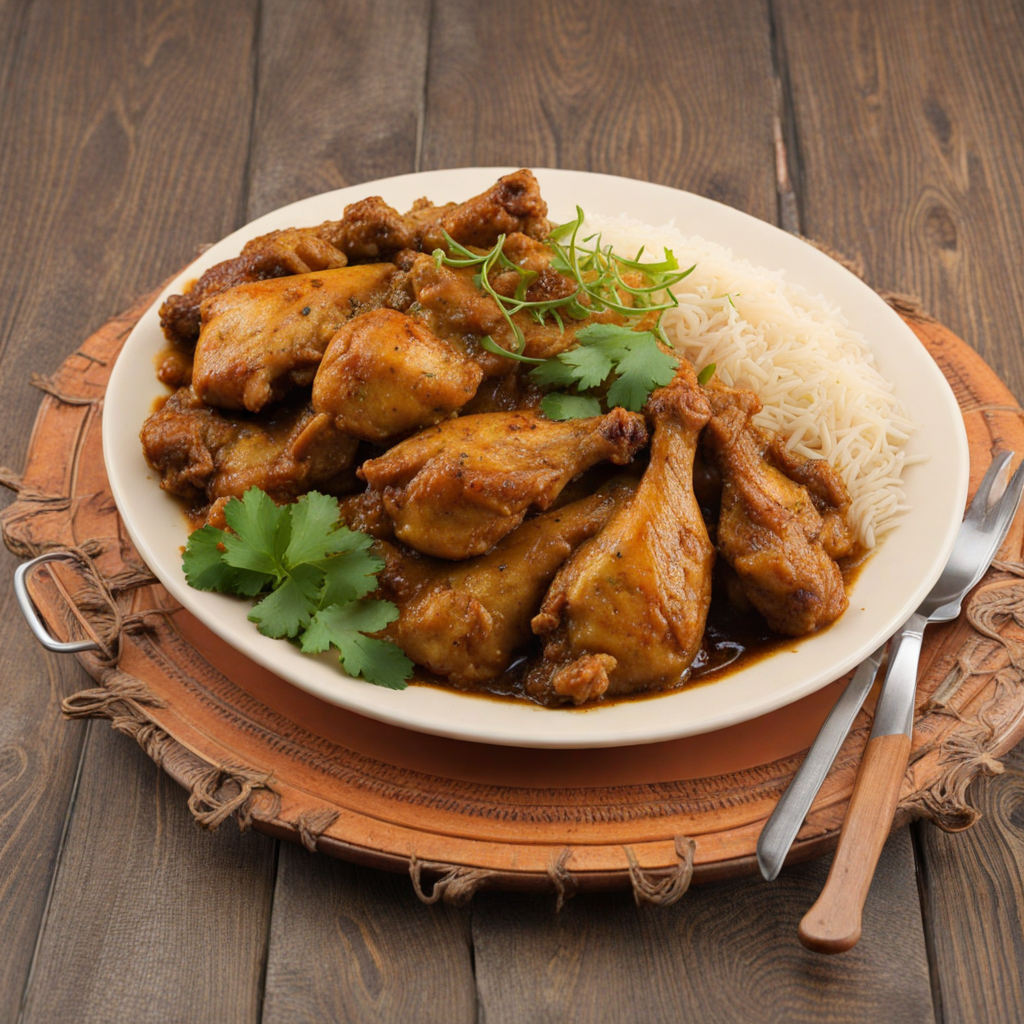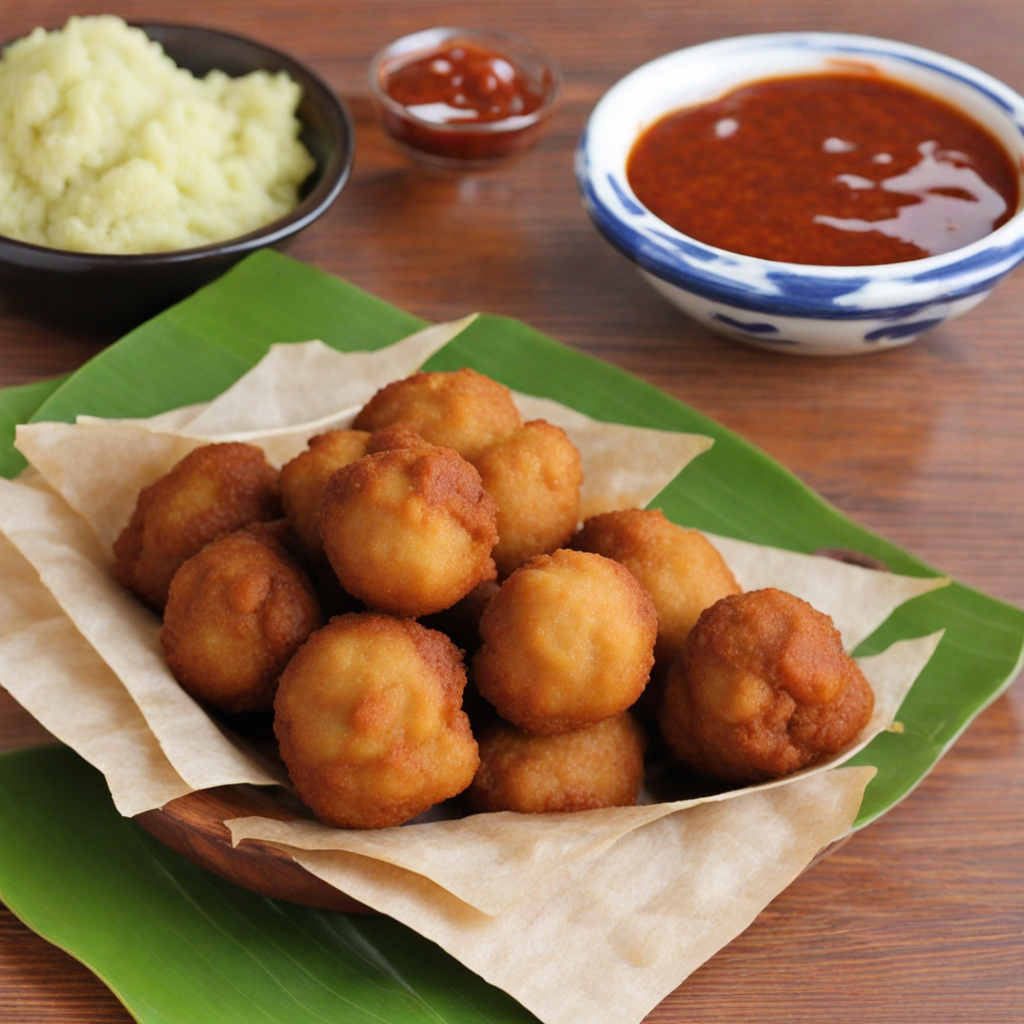Pone
Pone is a traditional dessert from Trinidad and Tobago that captures the essence of Caribbean flavors in a delightful, moist treat. This sweet dish is primarily made from grated cassava, also known as yuca, which is a starchy root vegetable that lends a unique texture and flavor. The grated cassava is combined with ingredients such as coconut milk, brown sugar, and spices like nutmeg and cinnamon, creating a rich and aromatic blend that is both comforting and indulgent. The natural sweetness of the coconut and the earthy notes of the cassava come together to create a harmony of flavors that is distinctly Caribbean.
How It Became This Dish
Pone: A Culinary Journey Through Trinidad and Tobago Pone, a traditional dish from Trinidad and Tobago, encapsulates the rich tapestry of Caribbean culture through its history, ingredients, and preparation. This versatile food, often made from a base of cornmeal, sweet potatoes, or cassava, has evolved over time, reflecting the island’s diverse ethnic influences and cultural significance. Origins The history of pone can be traced back to the indigenous peoples of Trinidad and Tobago, particularly the Arawaks and Caribs. These early inhabitants cultivated cassava, a starchy root vegetable that became a staple in their diet. They developed methods for processing cassava, including grating it and squeezing out the toxic compounds to create a safe, edible product. The resulting cassava meal would later serve as a foundational ingredient in various dishes, including pone. With the arrival of European colonizers in the late 15th century, the culinary landscape of Trinidad and Tobago began to change. The Spanish, French, and British brought with them new ingredients and cooking techniques that influenced local cuisine. African enslaved people, brought to the islands for labor on sugar plantations, introduced their culinary traditions, which melded with indigenous and European practices. This fusion gave rise to a variety of dishes, including pone. Pone traditionally began as a simple, hearty food made primarily from cassava, sweet potato, or cornmeal, often sweetened with local ingredients such as coconut, sugar, and spices. As the dish evolved, it absorbed influences from the diverse populations that inhabited the islands, including Indian and Chinese communities that introduced new flavors and ingredients. Cultural Significance Pone holds a revered place in Trinidad and Tobago's culinary heritage. It is often associated with festivals, family gatherings, and community celebrations. The dish epitomizes the spirit of sharing and hospitality prevalent in Caribbean culture, making it a beloved treat for both locals and visitors. One of the most notable occasions for pone is during Carnival, a vibrant festival celebrated with music, dance, and feasting. Pone is often served alongside other traditional dishes, offering a taste of the islands' rich culinary history. Similarly, at weddings and family reunions, pone is a popular dish, symbolizing togetherness and communal spirit. The preparation of pone can also be a communal activity, where family members come together to share in the labor of making this cherished dish. This process fosters connections and strengthens bonds, reflecting the importance of food as a medium for cultural expression and social interaction. Development Over Time As the years progressed, the recipe for pone adapted to changing tastes and available ingredients. The traditional cassava pone has maintained its authenticity, but variations have emerged that accommodate modern preferences. For example, corn pone, made primarily with cornmeal, has become popular, especially among those seeking gluten-free options. Sweet potato pone, enriched with the natural sweetness of the tuber, has also gained favor, showcasing the versatility of this beloved dish. In the late 20th and early 21st centuries, the globalization of food culture led to a revival of interest in traditional Caribbean dishes. Chefs and home cooks alike began to experiment with pone, incorporating new flavors and techniques while honoring its roots. This culinary renaissance has resulted in a resurgence of traditional Caribbean food, with pone at the forefront. Contemporary chefs in Trinidad and Tobago have taken pone to new heights, creating gourmet versions that showcase local ingredients and innovative cooking methods. For example, some chefs have begun to incorporate spices such as nutmeg and cinnamon, or even local fruits like mango and pineapple, to elevate the dish. Additionally, the use of modern cooking techniques, such as baking in specialized ovens or using sous-vide methods, has redefined how pone is prepared and presented. Moreover, the rise of food tourism in Trinidad and Tobago has played a role in promoting pone on a global scale. Visitors to the islands are increasingly seeking authentic culinary experiences, and dishes like pone offer a taste of the region's unique heritage. Food festivals and culinary events often feature pone, allowing chefs to showcase their creativity while celebrating traditional recipes. Conclusion Pone is more than just a dish; it is a symbol of the cultural heritage of Trinidad and Tobago. Its origins reflect the complex interplay of indigenous, African, European, Indian, and Chinese influences that have shaped the islands' culinary landscape. As a dish that has evolved over time, pone continues to hold a significant place in the hearts and homes of Trinidadians and Tobagonians. The communal nature of its preparation, the occasions it graces, and the innovative twists it has taken in modern cuisine all speak to the enduring legacy of pone. As it moves forward, it carries with it the stories of generations, the flavors of the land, and the spirit of a people who celebrate their history through food. Whether enjoyed during lively festivities or quiet family gatherings, pone remains a testament to the resilience and creativity of Caribbean culture, inviting all to partake in its rich and flavorful journey.
You may like
Discover local flavors from Trinidad And Tobago


